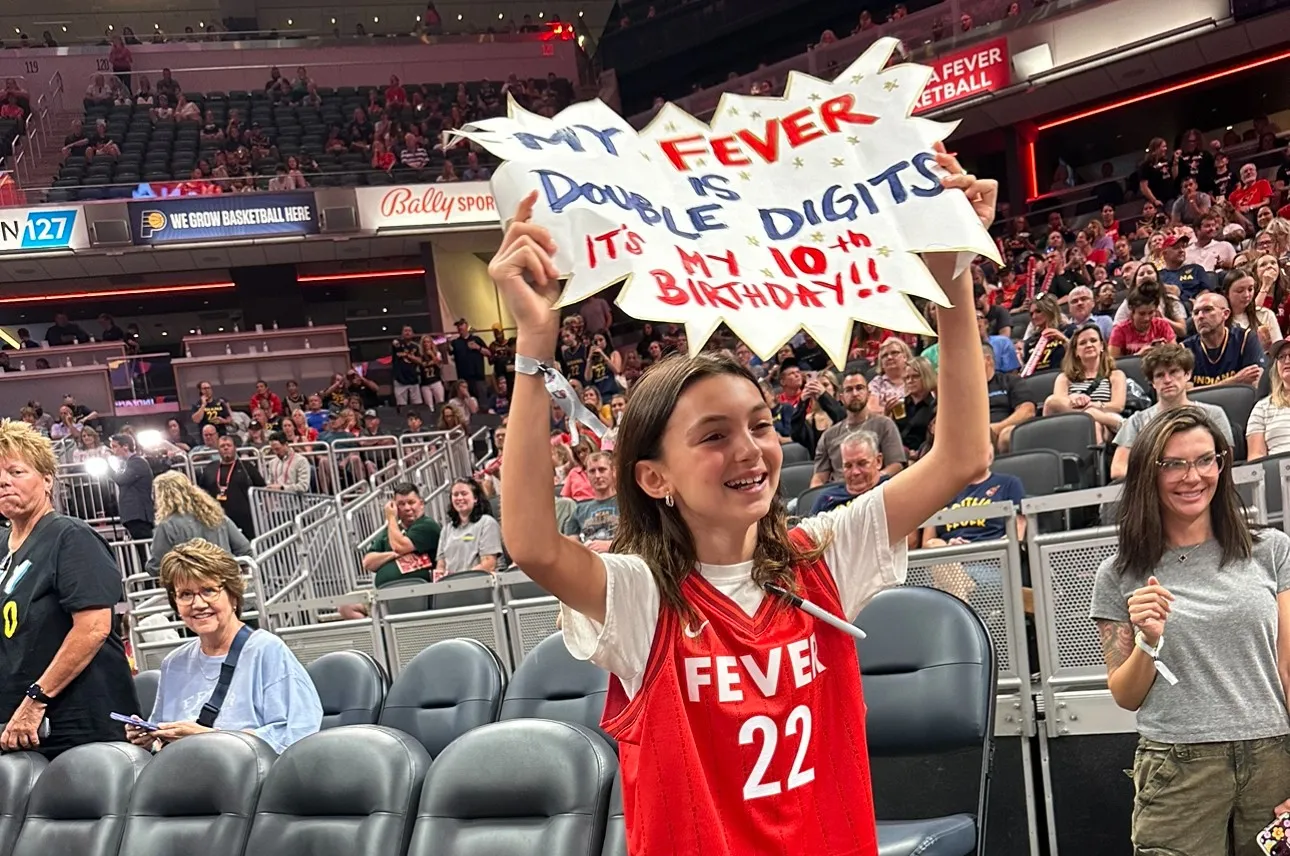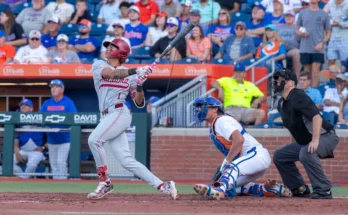With Just Eight Players Available, Here’s How Indiana Fever Can Legally Exceed the Salary Cap to Add Depth Amid Crisis
The Indiana Fever are navigating a tough early-season stretch, and their roster situation has taken a critical turn. With injuries and absences mounting, the Fever may be down to just eight available players for their upcoming games. In a league with strict roster and salary cap regulations like the WNBA, this presents a unique challenge—but also opens the door to specific exceptions the team can use to stabilize the roster. Indiana might have a path to go over the salary cap, but it comes with stipulations, strategy, and risk.
The WNBA operates under a hard salary cap, which means teams are not allowed to exceed the limit under normal circumstances. However, the collective bargaining agreement (CBA) does include clauses for hardship exceptions and emergency situations, which can allow teams like the Fever to temporarily expand their rosters. With only eight healthy players—just one more than the minimum necessary to play—the Fever are close to qualifying for the hardship exception. Once they officially fall below ten available players due to injuries or health protocols, they can petition the league to sign additional players without being forced to cut anyone currently under contract.
The hardship exception is a key mechanism teams can use when they are faced with severe injury issues. It allows a team to add a player to the roster on a temporary contract that does not count against the salary cap. But for that to happen, the league has to approve the request and verify that the absences on the roster meet the criteria. The WNBA typically requires documentation for injuries or other extenuating circumstances that leave the team short-handed. If the Fever meet those conditions, they can sign an additional player—often on a prorated minimum contract—without cutting anyone from the active roster or violating the cap.
For Indiana, this couldn’t come at a more crucial time. The franchise is trying to build momentum in the Caitlin Clark era, having drafted the college sensation first overall in 2024. But the early part of the 2025 campaign hasn’t gone as planned. While Clark has dazzled fans with her playmaking and shooting, the Fever have struggled to stay healthy and maintain depth. Key contributors have gone down, and the bench is stretched thin. With only eight players available, that depth is on the verge of collapsing. That’s not just a competitive issue—it’s also a safety one. A team running a full 40-minute game with only eight players risks player burnout and increased likelihood of further injuries.
The CBA’s hardship rule is not meant to be a long-term fix. Players signed under hardship contracts can only remain on the team while the conditions that warranted the exception persist. As soon as an injured player returns and the team rises to ten or more available players, the hardship contract must be terminated unless a corresponding roster move is made. This places pressure on both the front office and the temporary player. The player, often brought in with little preparation time, must quickly adapt and make the most of their short window. For the team, it’s a juggling act of managing health, cap space, and continuity.
Indiana’s front office, led by general manager Lin Dunn, has some decisions to make. They must assess how long their injured players will remain sidelined and whether it’s worth initiating the hardship process. If absences are expected to be short-term, they might ride it out with the current group. But if injuries linger or more players go down, the Fever will have little choice but to seek emergency help. And they’ll need to act fast—hardship signees typically need to be ready to suit up immediately.
So who could Indiana sign if they do get the hardship exception? Typically, teams look to veterans without contracts, players recently waived during training camp, or even standout performers from overseas leagues. The WNBA’s tight roster limits mean talented players are regularly cut due to numbers, not ability. There are capable athletes available, and for players on the fringe of the league, hardship contracts offer a golden opportunity. They can showcase their value and potentially turn a temporary deal into a full-season spot if they shine.
The Fever might also consider players who are familiar with their system—perhaps someone who was with the team in training camp but didn’t make the final roster. These players would likely need less time to integrate and could immediately provide relief. With limited practice time and immediate need, familiarity could be a valuable asset.
Going beyond the cap through hardship exceptions does not relieve long-term pressure, however. Even as the Fever maneuver to stabilize their lineup, they still face broader questions about roster construction and durability. The WNBA’s compact schedule and limited roster size mean teams can’t afford long-term absences or missteps. For a young team like Indiana, injuries expose not only physical vulnerabilities but organizational ones. The Fever must not only manage the short-term crisis—they must plan ahead to ensure they’re better insulated against similar scenarios in the future.
Depth has long been a concern for WNBA teams. With just 12 roster spots (and some teams choosing to carry only 11 to stay under the cap), the margin for error is razor-thin. One or two injuries can quickly spiral into a full-blown emergency. The hardship exception is a necessary safeguard, but it also underscores a larger conversation in women’s basketball: should rosters be allowed to expand, and should the salary cap be raised to reflect growing popularity and revenues? Players, fans, and media alike are increasingly vocal about the constraints of the current system.
For now, the Fever must operate within the existing structure. And within that structure, the hardship clause may offer temporary relief. If the front office can navigate the rules successfully, Indiana can add a body or two to give its core players a breather and avoid overextending the roster. In the best-case scenario, a hardship signee contributes meaningful minutes, the team avoids further injuries, and injured players return soon. But the Fever must also be ready for the worst-case scenario—where the injuries persist, results suffer, and the hardship players are thrust into significant roles beyond expectation.
Coaching strategy also becomes a critical factor. Head coach Christie Sides must manage minutes more conservatively, potentially shifting rotations and roles to mitigate the lack of personnel. A smaller rotation means more minutes for everyone, and that can impact performance on both ends of the court. Players may fatigue earlier, decision-making may suffer, and defensive intensity can drop. Conversely, a short-handed squad can sometimes play with more urgency and cohesion. The adversity may help sharpen chemistry and galvanize the locker room—though that’s a tall order in a physically demanding league like the WNBA.
Caitlin Clark’s presence adds another layer to the situation. As the most high-profile rookie in recent memory, the team wants to build around her effectively while protecting her development. Running her into the ground with extended minutes could have long-term consequences. Indiana must balance her usage carefully, especially if the roster remains thin. Ideally, additional signings through the hardship exception will allow Clark and her teammates to play in more manageable spurts, preserving energy and reducing injury risk.
In the end, the Fever’s ability to go over the cap through a hardship exception isn’t just about adding a name to the bench—it’s a test of their adaptability, resourcefulness, and leadership. They must act quickly, comply with league rules, and find a player who can contribute right away. The margin for error is small, but the stakes are high. For a franchise in the spotlight, building for the future while surviving the present is the challenge. How they respond in this moment will reveal as much about their identity as any win or loss.
While fans may worry seeing the Fever shorthanded, there is precedent and a process in place to help the team get through it. Indiana’s front office, coaching staff, and players will all have a role to play in weathering this storm. With the right move and a bit of good fortune, this crisis could evolve into a turning point. And if the league’s mechanisms work as intended, the Fever just might emerge stronger on the other side.



